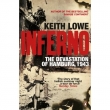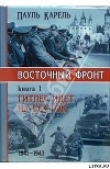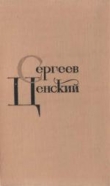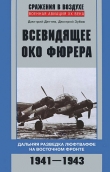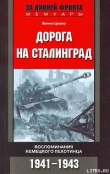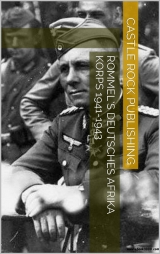
Текст книги "Rommel's Deutsches Afrika Korps 1941-1943"
Автор книги: Автор Неизвестен
Жанры:
История
,сообщить о нарушении
Текущая страница: 9 (всего у книги 19 страниц)
The 3rd Indian Brigade's box lay in the path of 21st Panzer Division anc the two armoured blocks of the panzer battalions swept down upon the weakly armed defenders. For forty minutes the out-gunned brigade held 5th Panzer Regiment back but then a blow was delivered under which the defenders were crushed and the panzers swept across the now-silent position-heading northwards. During their advance they encountered 7th Motorisec Brigade in the 'box' at Retma and swept across that unit destroying anc dispersing it. The Ariete Division struck at Bir Hachim. The first attack went in at 09.00hrs when a force of 50 M 13/40 tanks stormed forward and ran ini; a mine-field. The Italian attack halted within range of French anti-tank gur.s but then a small, determined group smashed its way forward and into the positions held by the French Foreign Legion. The tanks were destroyed in close-quarter combat. Then a second assault came in at 09.30hrs but this lacked determination; the tenacity of the small, French garrison had bafflec the efforts of a whole Italian armoured division.
Towards 11:00 hrs the 44th Royal Tank Regiment was ordered to advance and to intercept the panzer spearheads and the graphic words of one of the officers of the reconnaissance detachment convey the morale effect of mass armour, 'On topping a rise we could see on the eastern skyline a solid mass of vehicles stretching southwards into the haze as far as the eye can see'.

This was the 21st Panzer moving on to Trigh Capuzzo and in the battles which then followed the anti-tank gun line of 21st Panzer Division destroyed 18 British tanks from concealed positions in a wadi. [14]
By l0:00hrs the Africa Corps was driving northwards with its flanks protected by 90th Light Division which had encountered British armoured forces west of Bir el Gobi. The Italian XX Corps delayed by the determined resistance of the Bir Hachim garrison had to skirt round the French 'box' and had only reached a point five miles north-east of Bir Hachim, where it regrouped.
The panzer spearhead of the Panzer Army Africa was under attack from east, north, and north-east for although 8th Army had suffered from the initial assault it had pulled itself together and had begun to launch counter-attacks. The 15th Panzer's move just after 15.00hrs was struck in both flanks by artillery and tanks and one British attack at 16.00hrs caused alarm when the 60 tanks which struck at the flank threw back the panzers and the impetus of the British thrust being maintained overran a motorised infantry battalion. Then the armour was among the panzer division's lorries dispersing them in disorder and cutting off from their armoured spearhead the follow-up units. This severing produced a critical situation both at divisional and at Corps level. The commander flung in his headquarter defence unit. This battle group made up of a battery of 8.8cm guns, a panzer platoon, and a light flak company was joined by 16 other 8.8cm pieces from 1st Battalion 43rd Flak Regiment and the whole formed a defensive flank against the armoured assaults, while 15th Panzer Division forced its way northwards. The German guns stood at bay immobile but powerfully armed against an opponent less heavily gunned but with mobility.. As the tanks charged forward the guns spoke and the barrage drove back the British machines. On came the tanks again and yet again; each time they were driven back but still they moved into the assault until 12 of their number were destroyed or burning. They then drew back out of range and stayed immobile until nightfall. With one flank covered by a gun line but encountering opposition which demanded that she fight every step of the way 15th Panzer reached a point 9 miles south of Acroma where both 21st Panzer and Corps Headquarters closed up to her. To the east 90th Light Division and its satellites had reached to within 8 miles of El Adem but were locked there in battle with 7th Armoured Division. The Italian Motorised Corps was echeloned deep in the left rear and the situation around Bir Hachim was quite alarming for aggressive French patrols had intercepted and destroyed German supply columns. The German and Italian troops of CriiwelTs Group were still halted awaiting developments but mine-clearing teams had begun to gap the fields.
Although the panzer army's main objectives had been gained the ulcer of Bir Hachim, together with the ungapped mine-fields, had forced Rommel's supply convoys to make a wide detour round the open southern flank. The British tank attack, which had carried past the southern flank of Africa Corps and which had cut off the panzer units from their supply columns, affected the future of Rommel's plan for neither fuel nor ammunition was reaching the forward units. Seen from the British side Rommel's position was untenable His panzer force had been mauled: 21st Panzer Division had only 80 runners, and 15th Panzer only half that number. After initial successes the Africa Corps was dispersed in packets across the desert surrounded from the east. west, and north and short of the two basic requirements of desert warfare petrol and ammunition.
At 05.15hrs on 28 May the two Panzer Divisions were ordered to advance 15th Panzer upon Acroma and 21st Panzer upon Eleut el Tamar, but 15th Panzer was unable to comply with the instructions. There was a shortage c: tank and artillery ammunition and the petrol tanks were dry. The division's chronicle of woe included the fact that its armoured strength was down runners, that one of its infantry battalions had been destroyed, and that artillery had suffered heavy loss. The 21st Panzer Division went in alone a: 07:30hrs and had captured Eleut el Tamar and the heights at Point 209 sect 90 minutes later. During this sweep the 21st had cut a destructive swathe through the British units in the area. First it had met a mobile column code-named 'Stopcol' and had destroyed it. Tanks from 8th Royal Tank Regiment had been encountered and crushed and then the panzers swept over defensive box at Commonwealth Keep (Point 219) and had taken that out. Although the 21st Panzer units had reached the escarpment there was rx: route down from the summit to the Via Balbia and division halted there.
The situation at last light on 28th was that the Africa Corps was sr£ surrounded and that strong British forces were driving along the Trigh Capuzzo towards the trapped divisions. On the Bir Harmat front the 90th Light was slowly giving ground and XX Corps had sent forward the Trieste Division to gain touch with Africa Corps in response to the urging of the Army Commander. There was a slight improvement in the supply positicr when a number of lorries and tanks which had been dispersed by Britis' attacks rejoined the main body. Then, too, Rommel had made his ow» I reconnaissance and had found a route which his supply columns might use without much difficulty during the following day.
British commentators on this battle describe the 28 May as a quiet day ba it is more accurate to describe it as a day of wasted opportunities. The 8th Army had expected Rommel to maintain his northward progress and bar gathered strength to take the panzers in flank but the comparative inactivity and the inaction of the British units had allowed Rommel to continue with gapping the mine-fields and to reconnoitre routes for his supply trucks.
The battle order for 29 May was 'The Africa Corps will take Acroma in an attack to begin at 09:00hrs' and in an effort to draw the British attention from this drive the Italian Corps on the western Gazala front were ordered to demonstrate. The Africa Corps called in its outlying reconnaissance battalions and these formed a shield on the eastern flank. The number of' “kills” reported for the 28th -241 tanks and armoured cars, 46 guns including anti-tank weapons – gave a hope that there would be a successful outcome to the battle. The destruction of so many 8th Army's tanks was slowly reducing the numerical superiority which the British had enjoyed at the start of the fighting and these 'kills' were the result of the piecemeal and unsupported charges which the British tanks still made against the gun and panzer lines.
At 02:00hrs on 29 May Africa Corps cancelled the order to advance upon Acroma and instead directed that the divisions were to take up a defensive posture. The 21st Panzer was to consolidate on Point 209, the 15th Panzer was to protect the northern flank against the thrusts of 7th Armoured Division, while 90th Light was to stand on the defensive south-east of Bir el Harmat But on the western flank a small ray of hope was visible: Trieste Division had gapped the mine-field in two places – at about the level of the Trigh Capuzzo and the Trigh el Abd. Rommel had, meanwhile, led a convoy along the route he had found and brought it forward to where the vehicles of 15th Panzer lay stranded. His arrival was timely for 2nd Armoured Brigade advancing from Knightsbridge was seeking to drive a wedge between the panzer divisions to the north of and the Ariete Division south of the Trigh Capuzzo. Rommel called up a battle group from 21st Panzer to strengthen the 15th Panzer and then Ariete Division came up. The British advance then came up against the three Axis armoured divisions and from wireless intercepts it was clear that the British brigade had suffered heavily. A second armoured brigade, the 22nd, moved up to stiffen the attack by 2nd Armoured Brigade, and then a third Brigade, 4th Armoured, was drawn into the battle. The 7th Royal Tank Regiment fell victim to the lure of weak panzer forces and was enticed into range of a gun line hidden in the dust of the khamsin.
Then 15th Panzer Division moved forward to the Trigh Capuzzo where it gained touch with Ariete and had thereby cut off large numbers of 8th Army troops. Many of these made desperate efforts to escape under cover of the sandstorm and one group of 40 tanks and 200 lorries made repeated attempts to smash the encircling ring and escape to the east. Artillery fire drove back the British convoy. Although there had been a slight improvement in the supply situation it was still critical and seemed likely to remain so. Accordingly, Africa Corps commander proposed that the troops east of the British mine-fields should move westward through the newly created gaps and thus regain their start line area. Rommel proposed another alternative; he would reverse his front, giving ground as he moved slowly back towards the gaps through which the convoys of lorries would come. Once refuelled and rearmed he would then regroup and renew the attack.
At 02.00hrs the Africa Corps began its westward withdrawal protected by rear guards against a possible British move. Despite some losses in the minefields, Corps reached Bir Sidi Muftah at 06.00hrs where they surprised and were surprised by British troops. Corps had run head on into a 'box', held in strength by 150th Brigade from 50th Division, positioned between, and thus dominating, the two mine-field gaps. The first attack by the panzer division was halted at the edge of the mine-field and then driven back by anti-tank guns. The order was issued that the box must be taken quickly for by 11.30hrs the situation had deteriorated alarmingly and fresh crises were at hand. The 90th Light was being pressed by 1st Tank Brigade at Bir Harmat. there was heavy fighting along the Trigh Capuzzo where 22nd Armoured Brigade was trying to outflank Corps; 21st Panzer was wincing under a bombardment of unusual ferocity coming out of Gazala and the Royal Air Force was attacking every enemy column.
Victory now seemed certain for 8th Army; Rommel's forces, constricted within a small area bounded by the Trigh Bir Hachim, Trigh Capuzzo, and Trigh el Abd, were being pressed on to the British mine-fields. The two gaps which the Axis engineers had managed to create were so narrow that movement was slow; they were dominated by British artillery and movement only by night was possible. The whole determination of Africa Corps was centred upon holding off the British in the east while consolidating in the west, but this was impossible so long as the 150th Brigade box remained.
But if Rommel had his hours of anxiety the British, too, had had their moments of concern. The attacks by 2nd and 22nd Armoured Brigades had been crushed by the anti-tank gun screen and Guards Brigade had been hit while making a sortie from the Knightsbridge box and had been driven back with heavy loss.
Rommel's luck did not, however, desert him for during the night of 30/31 st supply trucks reached Corps concentration area and, when in the morning both panzer divisions reported themselves ready for action, army headquarters ordered them to expand their fronts and to take out the box at Got el Ualeb – the 150th Brigade position. The first unprepared and hastily organised assaults were driven back by the determined defenders supported by the remnants of a tank regiment.
The 8th Army, unaware that Rommel's supply position had been eased still optimistically believed that the Panzer Army was withdrawing from battle through the mine-field gaps and considered that the German loss of 371 tanks represented a more damaging blow to the Africa Corps than its own loss of 384 vehicles meant to it.
German attacks against the 150th Brigade box at Got el Ualeb came in during the day and one which captured Point 174 enabled the panzer division's artillery observation post (OP) to direct the fire of his guns with devastating effect The concentration of the whole effort of Africa Corps to take out the box dominated 1 June. At 07.30hrs, 30 panzer from 15th Division and a battalion of 104th Regiment, together with the Corps battle group struck down from the north, while from the south came 90th Light and then from the south-east elements from Trieste Division. Within the perimeter of the box the last five tanks of 44th Royal Tank Regiment formed line and went out to fight an unequal duel. In the great silence which, for a few minutes, hung over the stricken field the only noise was the creaking of the tracks as the armoured fighting vehicles moved towards the anti-tank gun line. Only one returned. Still resistance was being offered and Rommel led an abortive attack by 5th Panzer Regiment thrusting westwards through the northern lane intending to swing this assault through the mine-field and to attack 150th Brigade from the west. Uncleared mines destroyed 12 of his tanks and the assault was called off. Under cover of almost continuous Stuka dive-bomber assaults the German infantry supported by tanks beat their way through the British opposition until they had linked with the spearhead of the Italian division. Other German units on the eastern flank held off the weak and unco-ordinated attacks aimed at relieving the trapped brigade but by midday it was all over.
With the central box destroyed the German supply route was secure but the real significance was that the Axis armies held a firm bridgehead out of which they could advance. Rommel now directed his attention away from the dying battle and decided to clear the southern wing before reverting to his original plan of striking northwards. Thus, for 2 June, he ordered that 90th Light Division together with Trieste Division were to capture the Bir Hachim box under cover of a mock attack launched by the remainder of Africa Corps.
During the days from 2 to 10 June a battle of attrition was fought in the Knightsbridge and Bir Hachim areas. The 21st Panzer Division was at first ordered northwards while 15th Panzer was held to await developments in the southern sector. This order to split the armoured force was queried by the staff officers at army headquarters for the secret of the great success won by Africa Corps was that it had always struck as a single, invincible block. The officers realised that to follow the commander's order would spread the power of the Corps thinly across an area from Bir Hachim to the Via Balbia and this against a British Army which still retained freedom of manoeuvre together with a great number of tanks which it could commit to battle. As if to confirm the fears of the army staff, 8th Army launched a series of attacks under cover of the khamsin. The first drove in against 15th Panzer, then against Ariete, and finally against 21st Panzer. Rommel cancelled the original order and led 90th Light and Trieste Divisions southwards intending to capture the box at Bir Hachim.
There was little alteration in the battle scene on 3 June for both sides were regrouping, rearming, and preparing for the next round. Ritchie, 8th Army commander, was determined to gain the initiative and wireless intercepts were able to supply the intelligence to Panzer Army headquarters that 2nd and 4th Armoured Brigades, a total of about 400 tanks, were forming south of Bir Harmat Other British armoured and infantry forces had formed along the southern front of Ariete Division. Rommel ordered that Bir Hachim was to be taken, that the two Axis mobile Corps were to remain on the defensive, and the Crüwell Group was to continue its attacks on the northern and western flank. The 15th Panzer was instructed to drive by night, together with 114th Rifle Regiment, along the Trigh el Abd north of Sidi Belafarid and then in a general south-easterly direction to pass through the mine-field, to gain and to enlarge a bridgehead from which an encircling attack would be made at some later date.
During the early morning of 5 June British artillery opened a barrage upon the forward elements of Ariete Division and forced that division to give ground. The barrage then switched to 21st Panzer's sector and behind the shells came the armour striking towards the gaps in the mine-fields. The 8th Army was making a pincer movement to destroy the German bridgehead-Aware that, if the British controlled the exits to the mine-field gaps, the Panzer Army would again face supply difficulties the German counter-attacks were frequent and furious. Within the small desert area between the Trigh Bir Hachim, Capuzzo, and El Abd there was then fought the hard and bitter tank battles which have passed into British military history as the Battles of the Cauldron.
The assaults by Indian infantry and by the 22nd Armoured Brigade struck Ariete Division and forced its troops back past Bir el Aslagh and to Bir el Tamar but then 8th Panzer Regiment swept forward and the 22nd Armoured Brigade, already halted and baffled by the German gun line, was flung back by 8th Panzer Regiment with considerable loss. The 15th Panzer Division, too, had had successes and claimed no less than 50 'kills'. In the afternoon of 5 June, the tanks of 15th Panzer were moved from the bridgehead position to Bir el Harmat but 21st Panzer, which should have collaborated in the counter-attack, had been held by the British tank force which realised that is was now fighting for its life. With the tanks in front of 15th Panzer driver, back in confusion the British and Imperial infantry bore the full brunt of the German counter-attack and were overrun.
Late in the morning the assaults of the British had been driven back on both the northern and the southern sectors and the pincers of the panzer divisions storming forward in pursuit of the withdrawing armour had met and thus had cast a ring around 8th Army's tank force. During the various thrusts and advances not only had the Bir el Harmat box been overrun but the headquarters of both 5th Indian and 7th Armoured Divisions had been dispersed while among the British units in the Trigh Bir Hachim and in the Knightsbridge area havoc had been created. Only at Bir Hachim itself was there still the iron resolve to hold out, and to reduce this troublesome box Rommel ordered that an especially strong battle group be formed and that the French were to be destroyed.
During the night of 5/6 June the British and Indian forces on the Aslagh ridge had been destroyed and the losses reported to 8th Army headquarters included not only two brigades of infantry but four regiments of artillery and more than a hundred tanks. Losses on this scale could not be accepted and it was clear that the initiative was once more in German hands. This was demonstrated by the move which 15th Panzer Division made during the afternoon of 7 June when it captured the high ground north of Knightsbridge against the determined, but uncoordinated, attacks by 22nd and by 4th Armoured Brigades. The fierce fighting of the past days had consumed a higher than normal amount of tank and artillery ammunition and the supply columns were victims of the aggressive British armoured car patrols. To combat these patrols and to ensure the safe arrival of the supply columns, Rommel detatched some of his panzer force as escort, a move which he could afford for now it was clear that the British effort was weakening. The 8th Army's attacks were becoming less strong in intensity, less frequent, and of shorter duration and among the Panzer Army staff there grew the impression that it was the British intention to draw back upon Tobruk and to commit its armour west of that town.
Upon the defenders of Bir Hachim the full force of the German attack was now concentrated. Stuka bombers attacked with monotonous regularity and the French, who had been fighting since the offensive opened, faced with bombardment from the air and from the ground, attacked by tank and infantry without cessation, had been compressed into a small perimeter. When armoured infantry from 15th Panzer Division captured a dominant feature the defence became impossible to maintain and during the night of 10/11 June the French withdrew. The evacuation of the Bir Hachim box opened the final chapter of the defeat for with its fall collapsed the British defence system. The central and southern sectors had been cleared of the British forces; only those in the Gazala sector needed to be attacked and Rommel's plan would have succeeded although its execution had not followed his time-table or sequence.
The 8th Army then pivoted back on the untouched boxes of 1st South African Division and 50th Division and formed a new line from Gazala to Knightsbridge. Once again these newly organised positions were garrisoned by infantry.
Rommei then varied his original plan by moving the area of the main thrust from west to east of Knightsbridge to intercept and catch the greatest number of the two British divisions on the northern sector. The advance began at 15:00hrs on 11 June and while 21st Panzer hemmed the battle area of the Cauldron in from the north an encircling group swung towards El Adem. This armoured fist had Trieste Division on the left wing, then 15th Panzer with the two reconnaissance battalions on its right flank, and then the motorised element of 90th Light Division. By 15:00hrs the panzer wave had reached the first objective of Naduret el Gheseauso having encountered only weak British opposition and there Rommel waited for 8th Army's counterattack. But there was no reaction and the advance was then renewed. The 21st Panzer had, meanwhile, driven south of the box at Knightsbridge intending to attack the British armour from the rear. The battle on 12 June did not unfold with dramatic suddenness for both sides were waiting for the other to make a move. Characteristically, Rommel ordered his anti-tank gun line to close towards the British armour daring it to charge and while attention was being held there he sent the right wing of 15th Panzer Division swinging like a scythe blade towards Bir Lefa and the high ground north-west of that place. As the German tanks advanced they were opposed by tanks from 2nd and 4th Brigade and heavy fighting then ensued. At 11:00hrs, three hours after the battle opened, the 90th Light reported that it had reached El Adem and the 21st Panzer, which then came in, struck 7th Armoured Division in the flank. The whole British force was now trapped between the jaws of 15th Panzer closing in from the front and the 21st Division striking from the back. At 14:00hrs the 15th Panzer Division reported that the British from was withdrawing and two hours later announced that Bir Lefa had been taken. By last light the division had reached Point 174 on the Hagiag el Raml by which time 90th Light had attained the high ground north of El Adem. The 21st Panzer Division was given the task of covering the northern flank.
The turning point in the battle came on 12 June; the British armoured fragments had been smashed and 120 armoured fighting vehicles had been lost. The Africa Corps strength return for 11 June had given the number of runners as 124 with 60 more serving with the Italians.
Wireless intercepts indicated that the British armour had been ordered to be offensive west of the remaining boxes and in the dawn light of 13 June the 8th Army's tank regiments attacked southwards but they were seduced into the range of 8.8cm guns and destroyed. The 15th Panzer then went into a counter-attack upon Knightsbridge at 05:30hrs on 13 June but came up short against two belts of mines and remained halted while 21st Panzer, on its left flank, swung along the Rigel escarpment to the north-east of Knightsbridge. Holding position on the ridge were men of the Scots guards supported by South African field and anti-tank artillery. British armour was committed to halt the victorious advance of 21st Division's panzers but they would not be gainsaid and by 17:56hrs could report that the box on Rigel ridge had been captured.
The capture of that high ground made the defence of Knightsbridge box an impossible task and the guards brigade, or rather the remnants of it for its battle had lasted for nearly a fortnight, broke out to join the main body of 8th Army. Ritchie, the Army commander, realised that the victory which he could sense at the end of May had turned to bitter defeat. The Gazala Line would be abandoned and the Army would withdraw and rally before coming on again.
Rommel now had a clear field and flung his forces northward again to trap, within the northern sector, the South African and British divisions at Gazala. The battlefield was tidied en route by the destruction of the box at Eleut el Tamar, taken only after the most bitter fighting. Intercepts reported that the British were moving large bodies of troops from the boxes around Gazala eastwards.
Immediately Rommel ordered that 21st Panzer Division gain the high ground dominating the Via Balbia while 15th Panzer cut the road and held back the attempts to escape. But the opposition put up by British tank forces during the panzer advance northwards had delayed their arrival for long enough to allow the South Africans to begin their withdrawal. The 50th Division faced with blocks on the road east carved their way through the Italian 10th Corps and journeying via Bir Hachim reached the main of 8th Army. Two British boxes, those at El Adem and Acroma, were still resisting the most determined assaults of the Axis troops.
Reports reached Army headquarters at 05:00hrs that South African forces were still moving down the Via Balbia. It was clear that the night drive by the panzer divisions had been in vain. The 21st Division, which had been now cast in the role of pursuing force in the next stage of the Gazala battle, was pulled out of the line and directed upon El Adem where 90th Light and Trieste Divisions were still engaged with the British garrison. The 15th Panzer Division which took over the tasks of 21st Panzer made only slow progress against attacks from both east and west and not until evening was the coast reached. Rommel's plan had been fulfilled.
The tons of stores gathered at points throughout the desert, the half a million mines laid in the Gazala positions, and numerical superiority had proved of no avail against a commander of a force in which armour was used en masse. The British cavalry charges, for that is all they had been, however gallant and however destructive of the German panzers, had failed and now there was only the bitter road eastwards back to the Egyptian frontier.
Spirits in the Axis Army were jubilant. The British had been beaten in the field, their armour dispersed or destroyed, and panzer spearheads were already at El Adem, thrusting deeper and deeper past Tobruk hoping to intercept and catch the 8th Army before it could halt and regroup. German diaries and letters of that time are exultant in tone 'Angriffsziel Tobruk' ('the target is Tobruk') or 'now it is Tobruk's turn were recurrent themes.
Rommel's plan to capture the town was based upon the experiences which he had gathered during the unsuccessful attacks of the previous year and upon a new idea. He would bluff the British into believing that he was pursuing them into Egypt with his mobile forces and then, suddenly he would swing back and attack Tobruk from the south-east with one group, while 90th Light Division carried the attack forward to Bardia. With only a day for regrouping, the Axis forces were ready to continue the battle and an advance was ordered for 17 June upon Gambut. The two German and one Italian panzer divisions moved out against minimal British tank opposition and then fanned out in a race eastwards. The German commentaries on the battle describe how both Rommel and the Africa Corps commander drove the advance forward and how, for as far as one could see, the surface of the desert was covered with tanks and lorries all moving eastwards towards Egypt.
At 18:00hrs at Sidi Maftah the direction of the march changed as the armada swung northwards and Rommel ordered the pursuit to be carried our during the night to reach the sea so that the Via Balbia would be blocked by 18 June. The whole Axis panzer force was spread out, each unit making the best progress it could, while to tha west the remainder of the panzer army had invested Tobruk.
It was not until 16.00hrs on 19 June that the panzer regiments of the Africa Corps moved forward and the hours of waiting had been put to good use by the workshops to carry out the maintenance necessary to keep the vehicles running. Their efforts brought the total of runners with each regiment to between 70 and 75. During the night heavy artillery had come forward into position around the town and the engineer battalion had constructed bridges across which the panzers could pass as they navigated through the anti-tank ditches and defences. The preparations to assault Tobruk had been completed and now only the hours needed to pass until zero at 05:20hrs on the morning of 20 June 1942.


